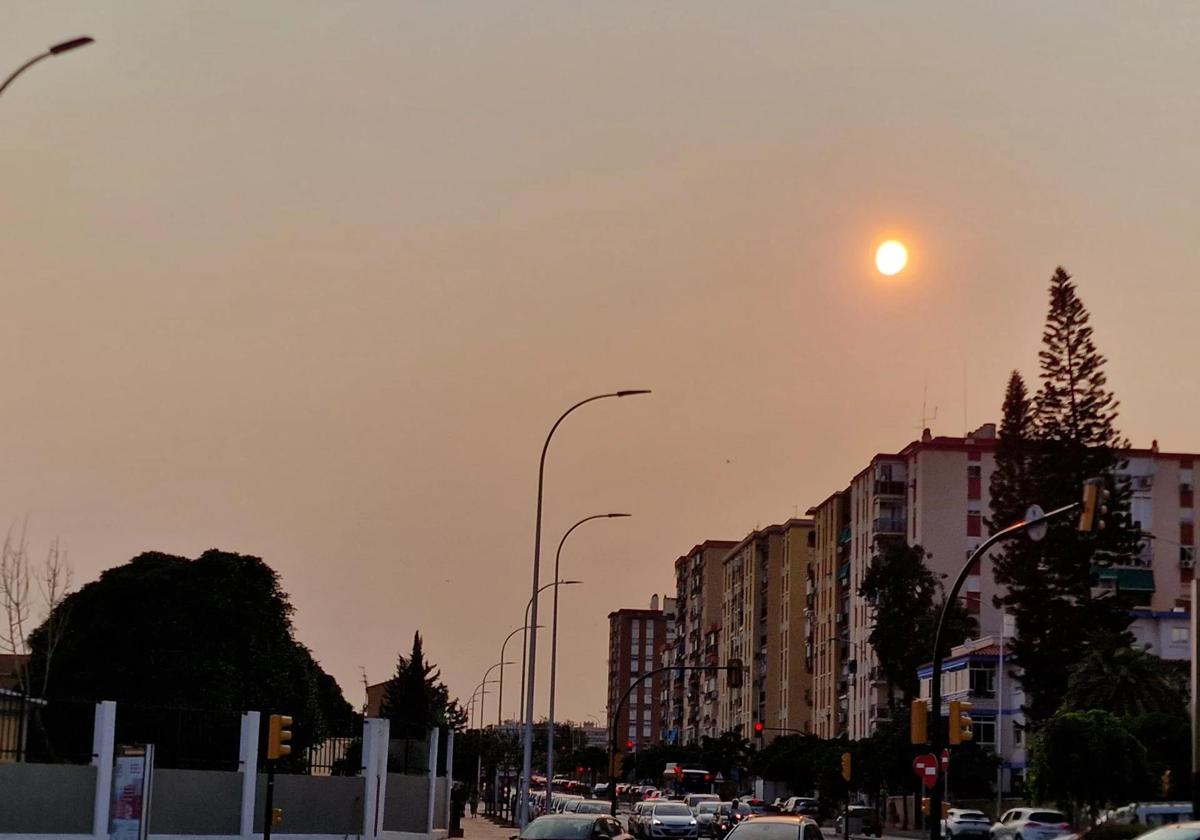Smoke from Canada's devastating wildfires turns the sky orange in Malaga and along the Costa del Sol
The scene was reminiscent of the impressive 'calima' haze of sand dust from the Sahara desert which shrouded the city in a similar hue in March 2022
The scene in Malaga on Tuesday, 3 June, was reminiscent of the impressive 'calima' haze, which painted the sky in the city orange in March 2022. This time, however, another environmental phenomenon, coming from much farther away, was the cause of the reddish tones - the devasting wildfires in eastern Canada.
The wave of fires - a total of 179 so far - in the North American country has already led to the evacuation of thousands of people, who had to leave their homes due to the danger of the fires themselves and the decreased air quality. The flames have consumed more than 50,000 hectares and the ravages of smoke are not only affecting North America - they have crossed the Atlantic Ocean and, since Sunday, have started to be noticed in Western Europe.
In Spain, particles from the Canadian fires have been detected mainly in the northwest of the mainland. Luckily, the smoke has been lingering at between 3,000 and 4,000 metres in altitude, which does not pose any health risks for the moment.
At the same time, the Ministry of the Environment in Canada has issued a warning concerning the poor air quality in much of the west of the country - an issue, which could reach the US as well. The most critical situation is in the western province of Manitoba, which has declared a state of emergency. More than 17,000 people have fled their homes and a total of 21,000 citizens have been displaced by the spreading fires, including hundreds of inhabitants of remote indigenous communities.
It was initially believed that the smoke would not go beyond the northeast of the Iberian Peninsula, but according to José Luis Escudero - head of SUR's 'Tormentas y rayos' blog - the strong winds of recent days have also brought it to the south of Spain, Malaga province and the Costa del Sol.
1.4 million hectares razed
In the first six months of the year, Canada has already witnessed more than 1,600 fires burn 1.4 million hectares of forest - an area equal to the size of Montenegro or the province of Burgos has been reduced to ashes. The explosive combination of high temperatures and low humidity has intensified the spread of fire.
Manitoba has suffered its worst start to the wildfire season in years. According to Kirstin Hayward from the forest fire service, nearly 200,000 hectares of forest have burned in the past 30 days, which is triple the annual average of the past five years.

